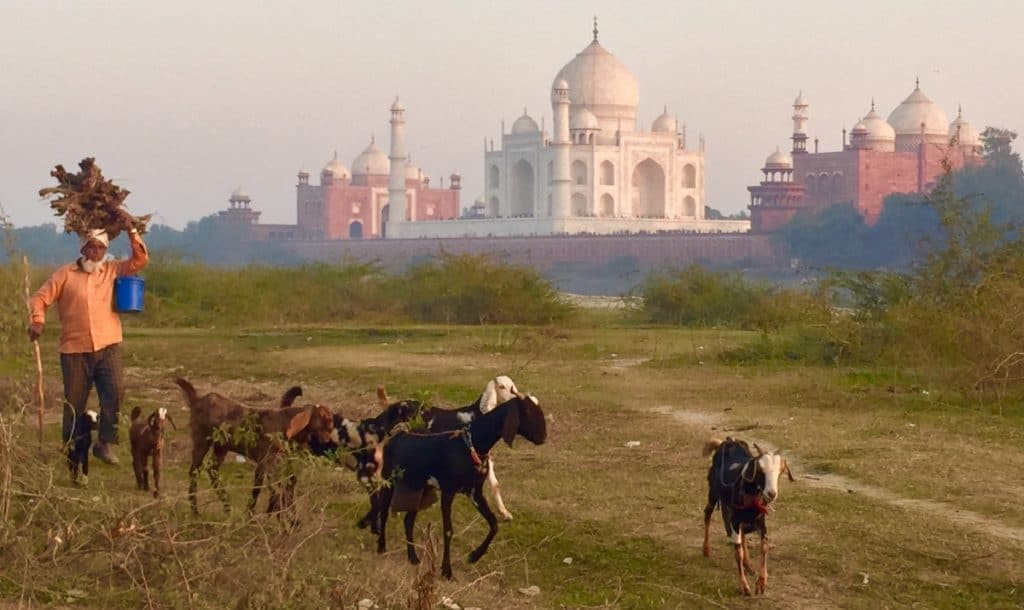Last Updated on October 25, 2024 by Ellen
This was one of the best weeks in my life. We were in Agra, India, where we watched the sunrise at the Taj Mahal and enjoyed a special full moon night viewing. The photographer in Theo led the way around town to find views of this Wonder of the World from different angles. It really does appear to change color at different times of the day. Romantic! It made me research a bit into the Taj Mahal love story.
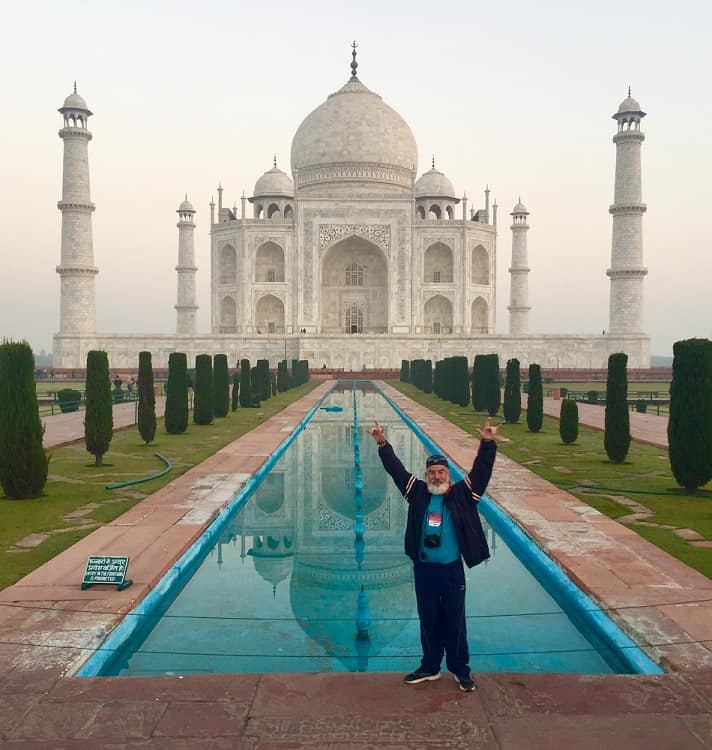
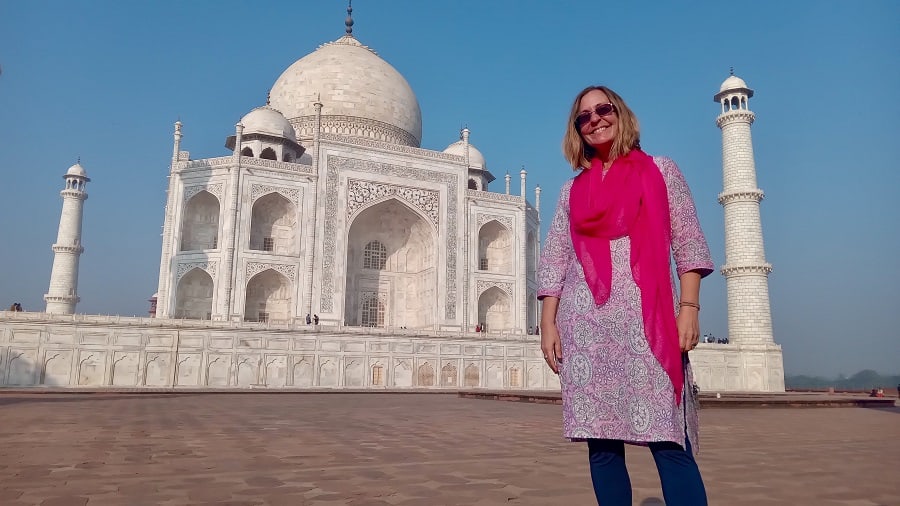
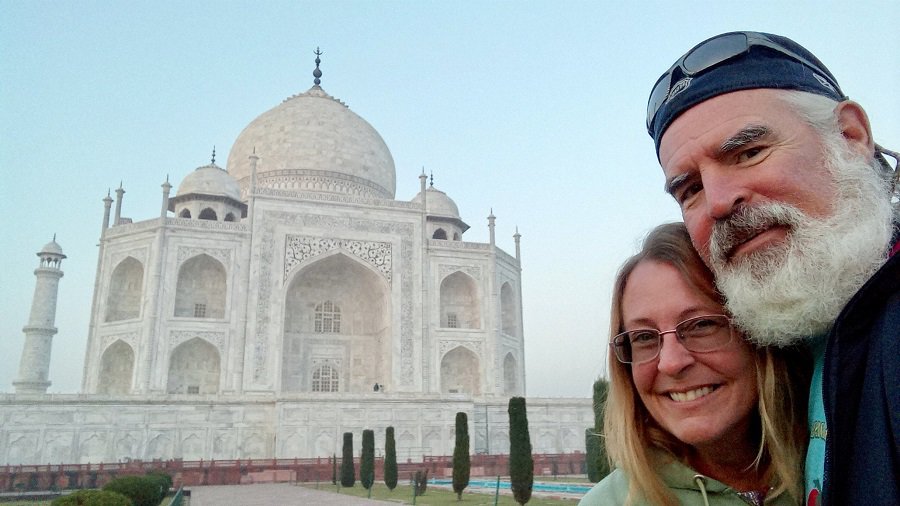
Taj Mahal love story
The Taj Mahal site is a 22-acre complex that includes mosques, fountains, gardens and gates. It took 20,000 workers and several years to build. The mausoleum complex was started around 1632 for an emperor’s wife. Now, 390 years later, the history of the Taj Mahal includes conflicting stories.
Was this beautiful, symmetrical structure really built by a grieving Mughal emperor in agony over the loss of his favorite wife? This is the popular romantic version of history. Another version says Shah Jahan wanted to assure his wife’s ascension to heaven. Still another says the emperor was awash with too much money and he simply built it to prop up his ego.
Some stories say Mumtaz Mahal was Jahan’s second wife, others say she was the third. Some stories say she died during childbirth at 38 years old, others say she died shortly afterward. Certain accounts say they had 13 children, others say 14.
The couple
I’ve read various stories about their characters. That Mumtaz was a great humanitarian; that she was a ruthless bitch — the perfect fit for a power-driven emperor.
There are stories about how Jahan went into a deep two-year depression from the grief of Mumtaz’s death, and was only lifted out by the spiritual aspects of his construction project to honor her pure heart. Other stories say he amputated the legs and hands of builders and designers so they could never build anything as beautiful or better than the Taj Mahal.
All accounts I’ve read say astrologers delayed their wedding date a few years to give them a lasting union. (Jahan married another/others while waiting.) All accounts say Mumtaz was Jahan’s most important confidant, as well as his favorite wife in the palace. He gave her the name ‘Mumtaz’ which means gem of the palace’ or ‘chosen one of the palace’.
Each version of their marriage history says the couple was inseparable. Mumtaz traveled with the emperor on military excursions throughout India even though she was frequently pregnant. Jahan gave her extra allowance and authority.
Current issues
A current conflict over the Taj Mahal is religious. Some Hindu nationalist scholars insist there was an ancient Hindu temple at the Taj Mahal site. They lament over the Mughal empire construction. This is a highly controversial view in a subcontinent partitioned by religion in its not too distant past. India was created for a Hindu majority in 1947 that stands at about 85% today. Pakistan’s borders were drawn for Muslims.
There is ongoing debate about pollution. It is slowly destroying India’s most iconic building. Recently, the Indian Supreme Court ruled to allow small businesses to stay within 500 meters of the Taj Mahal site. There had been an effort to evict everyone, despite generations of families living and working near the gates. Industry was previously banned from a special zone to protect air quality.
Meanwhile, Hindu cremation smoke drifts towards the western facade of the Taj Mahal with its black marble Islamic calligraphy that quotes the Quran.

Outside the Taj Mahal site — and its contestations and conflicts — the poor try to survive in the material world. Hindus, Muslims, Christians and others all live within sight of a breathtaking building that dazzles in sunlight and is mysterious by moonlight. Tent cities are packed, beggars sit at the steps of mosques and temples, single-use plastic litters everywhere you look, open sewers stink — all poverty realities in the shadow of opulence.
Religious righteousness, love stories, economic strife. Simultaneously, these human themes played with my thoughts as much as the Taj Mahal held my heart in awe. The energy I sensed inside the mausoleum was intense.
Taj Mahal love story?
So. Was it built for love, for religion, or for ego? A mix of all three? Which historian has it right? What do I believe?
Most people like to believe its history is romantic. Who doesn’t love a good story? We humans are sometimes satisfied without stark truth.
I see the Taj Mahal partly as a fearful symbol of impermanence. Even if Jahan built it out of sheer grief for the loss of his true love, the Taj shows his inability to let her go. That’s sad. No human ‘belongs’ to another.
If he built it to help Mumtaz ascend to heaven, isn’t flagging his wife to God really just Jahan playing god? And if he built it to stoke his status, isn’t he really just clinging to power, fearful of losing it?
Wouldn’t it have been more romantic to build Mumtaz some divine structure during her lifetime to celebrate love? Romance in real time seems underrated.
At some point, this all ends and we all go to wherever is next. Our remains are boxed inside a mausoleum or scattered into a river, our souls sent to paradise or to the next incarnation.
No matter what happens later, love now — because Life is Now and it’s not permanent.
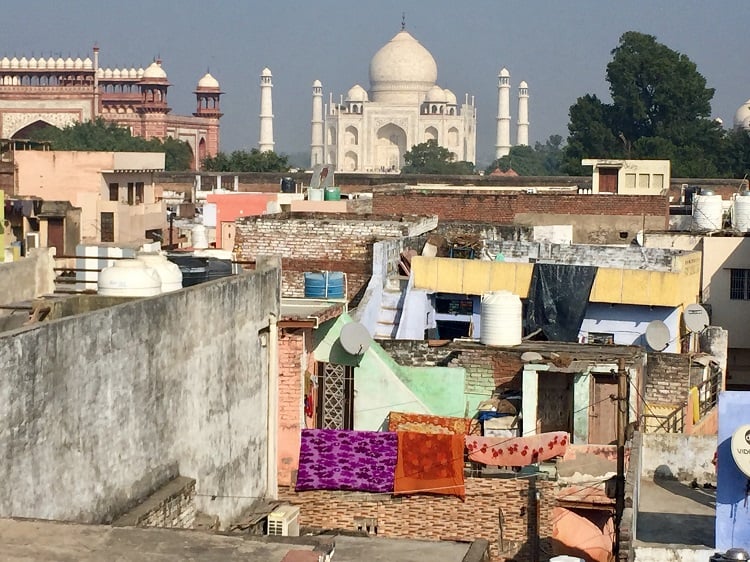
Thanks for reading, “Taj Mahal love story.”
You might also like other travel commentaries:

